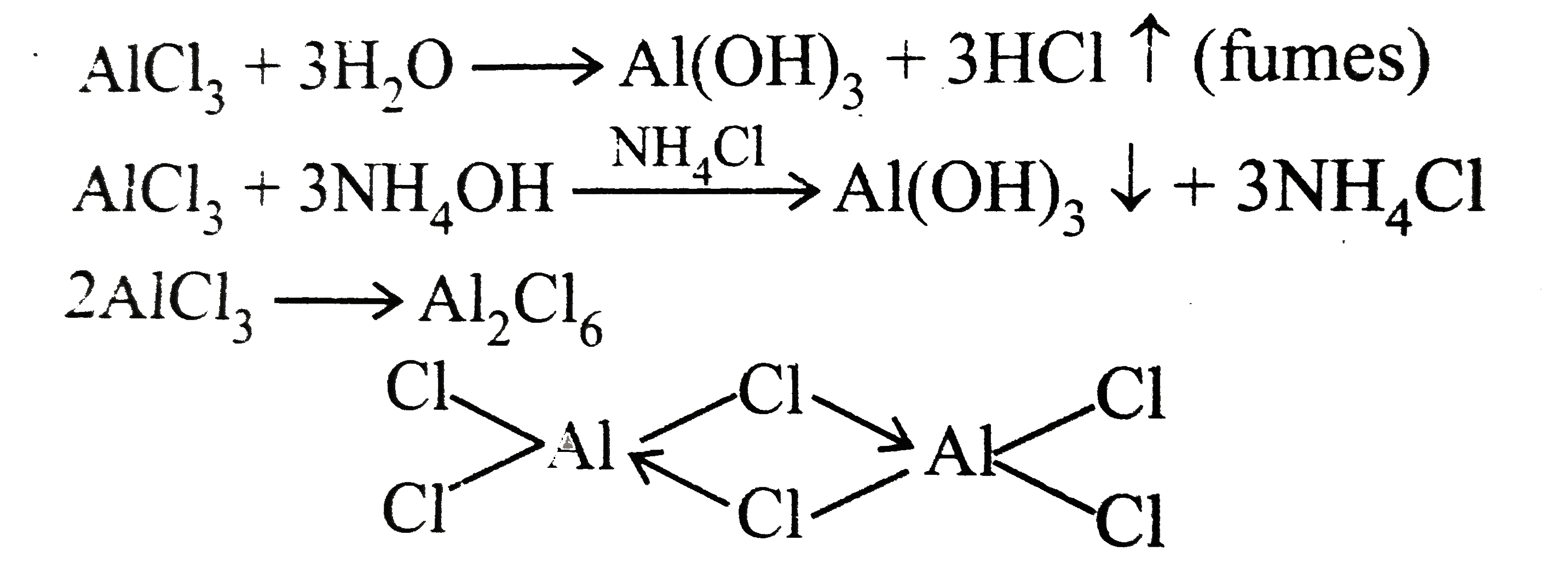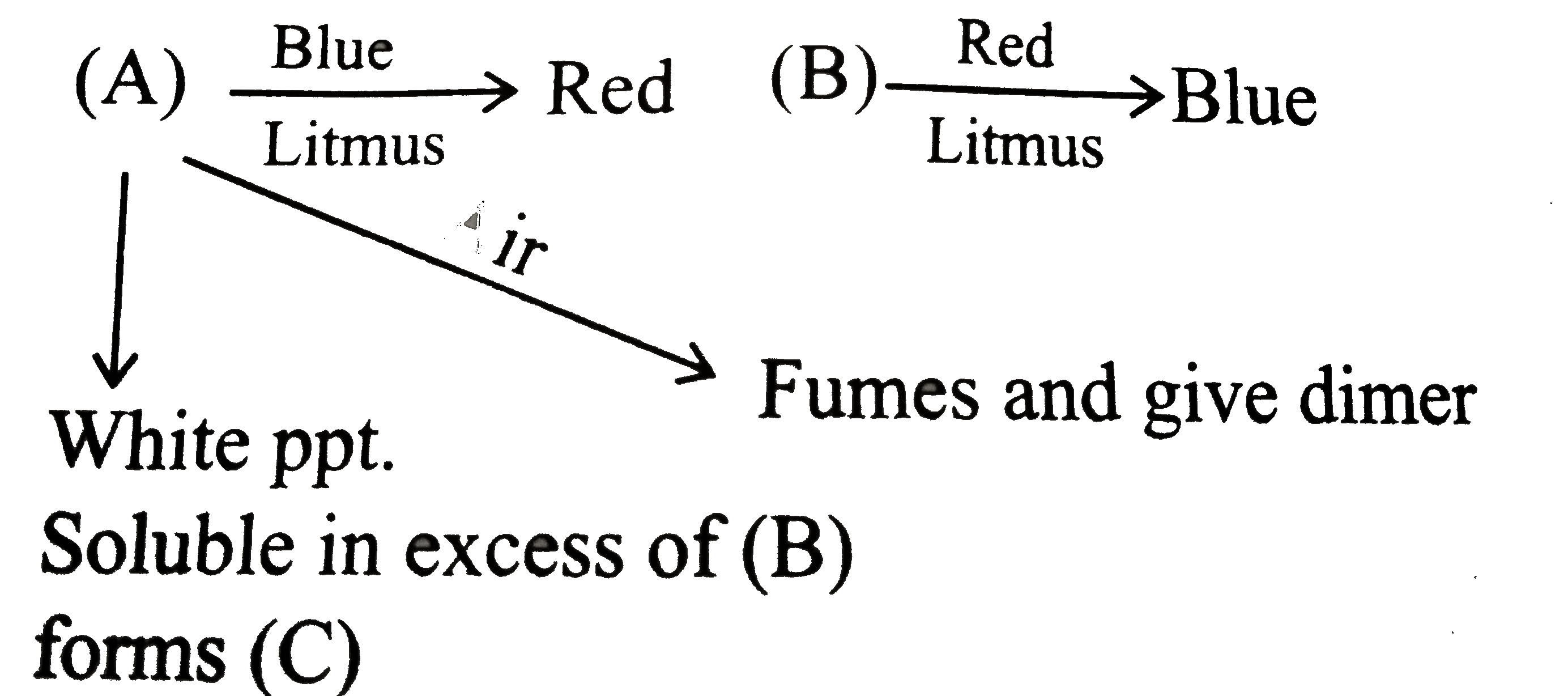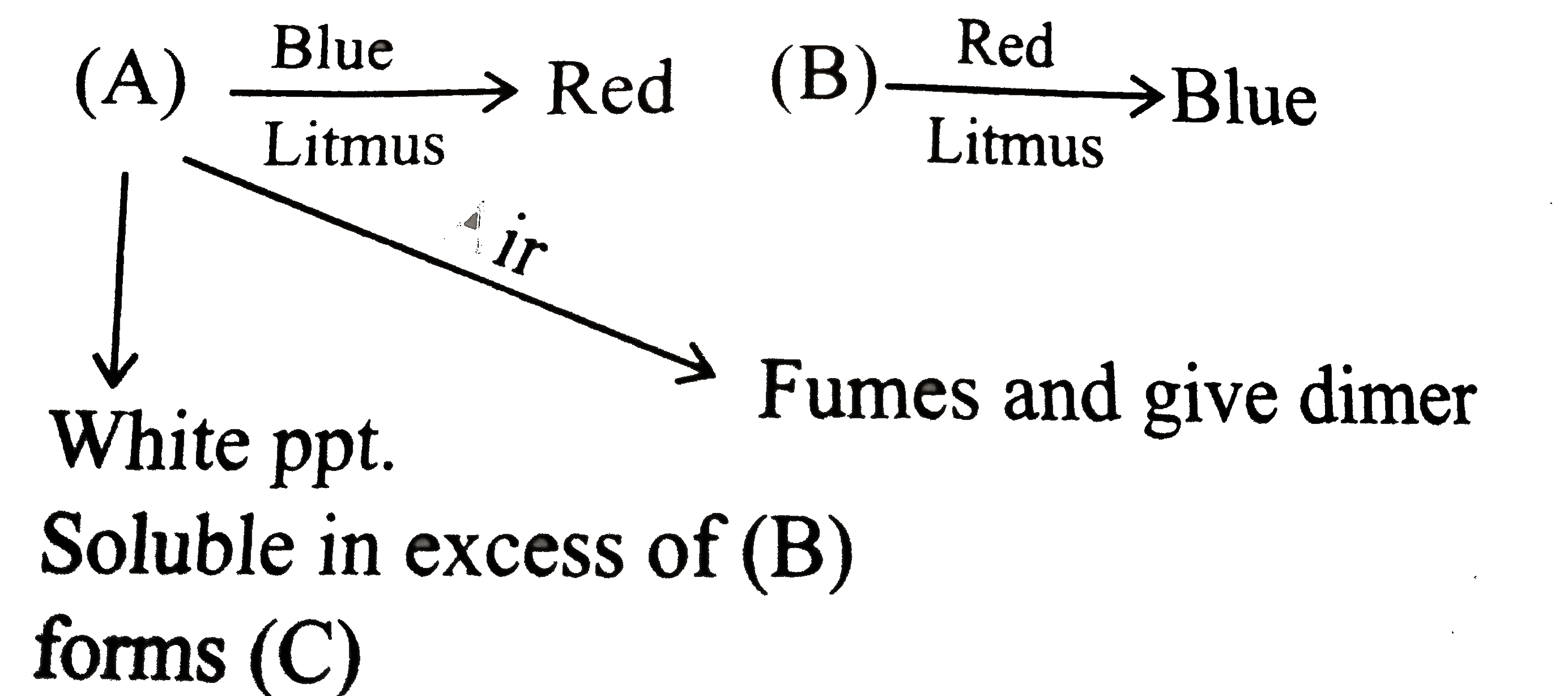A colourless mixture of two salts (A) and (B) [excess] is soluble in H2O.
![A colourless mixture of two salts (A) and (B) [excess] is soluble in H(2)O. Identify A](https://d10lpgp6xz60nq.cloudfront.net/physics_images/KSV_P2_CHM_C08_E01_045_Q01.png)
Identify A
AICI3
ZnCI2
FeCI3
None of these
The correct Answer is:a
(A) gives white ppt NH4CIandNH4OH
(A) is AI3+ and ppt is of AI(OH)3
AI(OH)3 is soluble in (B) ⇒ (B) is NaOH
(C ) is NaAIO2 (solium meta aluminate)(A) form dimer indicatting (A) is electrons whichin the possible case of ICI3
(A) is thus AICI3 (acidic due to hydrolysis turn blue lithium red)
(B) is NaOH (alkline turns red litmus blue)
AICI3(A)+3NaOH(B)→AI(OH)3White ppt+3NaCI
AI(OH)3+NaOH(Excess)−NaAIO2Soluble(C)+H2O
AICI3+3H2O→AI(OH)3+3HCI⏐↓ (fumes)
AICI3+3NH4OHNH4CI−−−−→AI(OH)3⏐⏐
⏐↓ (fumes)
2AICI3→AI2CI6

Topper's Solved these Questions
- BOOK - CENGAGE CHEMISTRY ENGLISHCHAPTER - QUALITATIVE INORGANIC SALT ANALYSISEXERCISE - Exercises (Multiple Correct) Part-A (Analysis Of Anions)30videos
QUALITATIVE INORGANIC SALT ANALYSIS
- BOOK - CENGAGE CHEMISTRY ENGLISHCHAPTER - QUALITATIVE INORGANIC SALT ANALYSISEXERCISE - Exercises (Multiple Correct) Part-B (Analysis Of Cations)28videos
QUALITATIVE INORGANIC SALT ANALYSIS
- BOOK - CENGAGE CHEMISTRY ENGLISHCHAPTER - QUALITATIVE INORGANIC SALT ANALYSISEXERCISE - Solved Example11videos
QUALITATIVE INORGANIC SALT ANALYSIS
- BOOK - CENGAGE CHEMISTRY ENGLISHCHAPTER - P-BLOCK GROUP 18 ELEMENTS - THE INERT GASESEXERCISE - Ex 5.1 (Objective)14videos
P-BLOCK GROUP 18 ELEMENTS - THE INERT GASES
- BOOK - CENGAGE CHEMISTRY ENGLISHCHAPTER - REDUCTION AND OXIDATION REACTION OF ORGANIC COMPOUNDSEXERCISE - SUBJECTIVE TYPE4videos
REDUCTION AND OXIDATION REACTION OF ORGANIC COMPOUNDS
Similar Questions
Knowledge Check
- Question 1 - Select One
Permanent hardness is due to presence of soluble salts of Mg and Ca in the form of chlorides and sulphates in H2O. It can be removed by
AboilingBClark's methodCtreatment with Na2CO3Dall of these
A colourless mixture of two salts (A) and (B) (excess) is soluble in H2O.(A) turns blue litmus red and (B) turns red litmus blue. (A) gives white precipitate with (B), which dissolves in excess of (B) forming (C).(A) when placed in atmosphere gives fumes and can form dimer. (A) gives white precipitate with NH4Cl and NH4OH which is soluble in (B). Identify (A),(B) and (C). Explain reactions.
View SolutionA liquid 'A' is treated with Na2CO3 solution. A mixture of two salts 'B' and 'C' is produced in the solution. The mixture on acidification with sulphuric acid and distillation produces the liqiud 'A" again. Identify 'A','B' and 'C' and write the equations involved.
View SolutionA white substance (A) reacts with dilute H2SO4 to produce a colourless suffocating gas (B) and a colourless solution (C )/ The reaction of gas (B) with potassium iodate and starch solution produce a blue colour solution. Aqueous Solution of (A) gives a white precipitate with BaCl2 solution which is soluble in dilute HCl. Addition of aqueous NH3 or NaOH to (C ) produced first a precipitate which dissolves in excess of the respective reagent to poduced a clear solution. Similarly addition of excess of potassium ferrocyanide to (C ) produced a precipitate (D) which also dissolves in aqeous NaOH giving a clear solution. Identify (A),(B),(C ) and (D ). Write the equation of the reactions involved.
View SolutionColourless solution of (A) gives white ppt (B) with AgNO3which is soluble in aqueous NH3 (A) also gives white ppt (C) with NaOH soluble in excess of it forming (D). (D) gives ppt (E) with H2S. Identify (A),(B),(C),(D) and (E).
View SolutionSolid A+H2O→(B)(while turbity which dissolves in HCI)

Identify EView SolutionSolid A+H2O→(B)(while turbity which dissolves in HCI)

Identify CView SolutionSolid A+H2O→(B)(while turbity which redissolves in HCI)

Identify BView Solution



